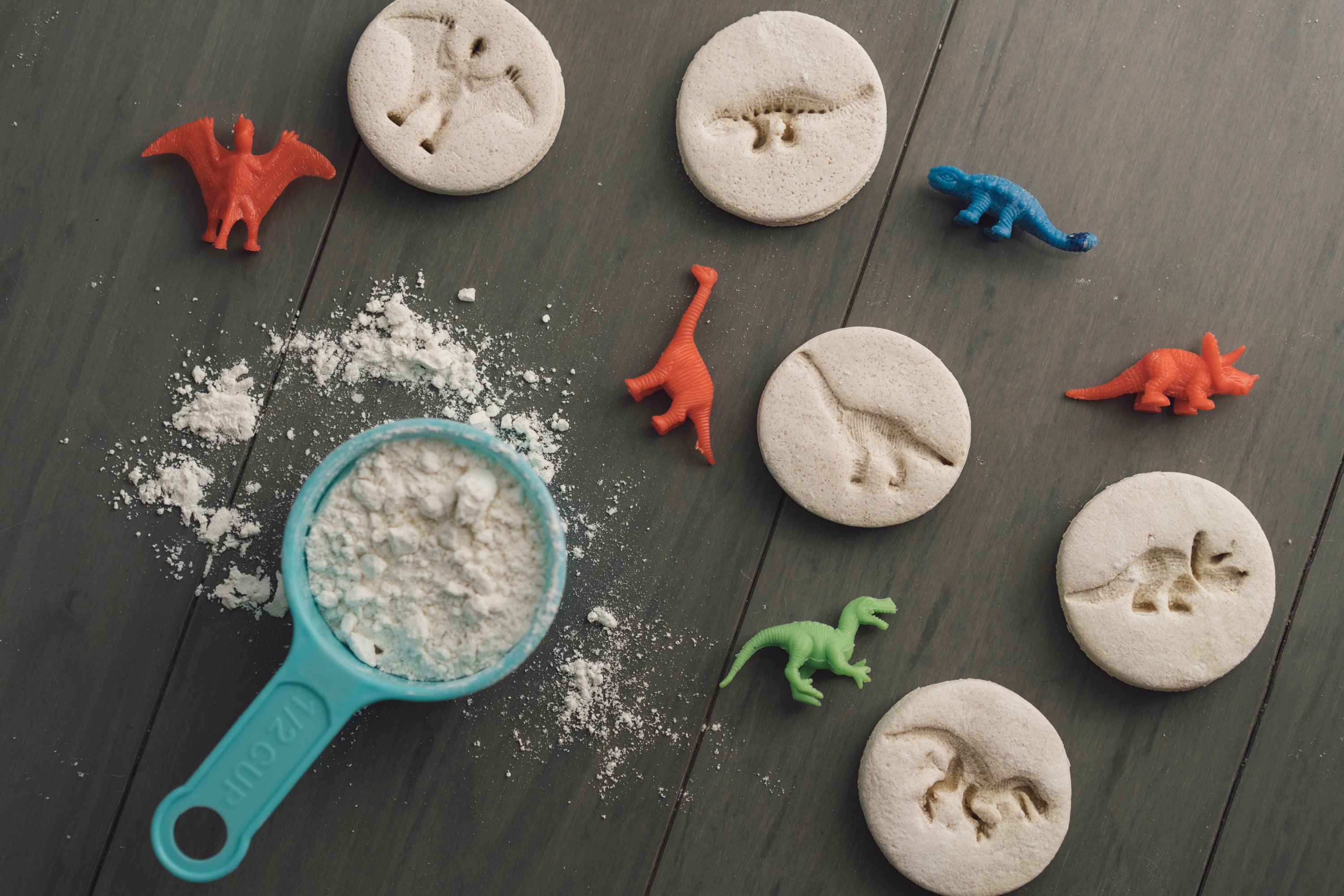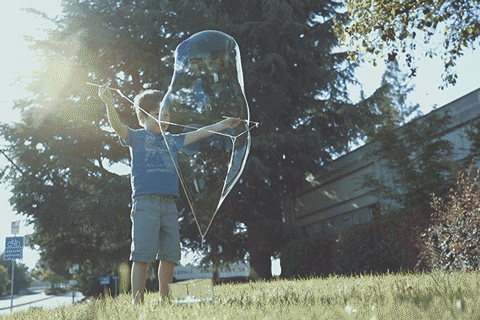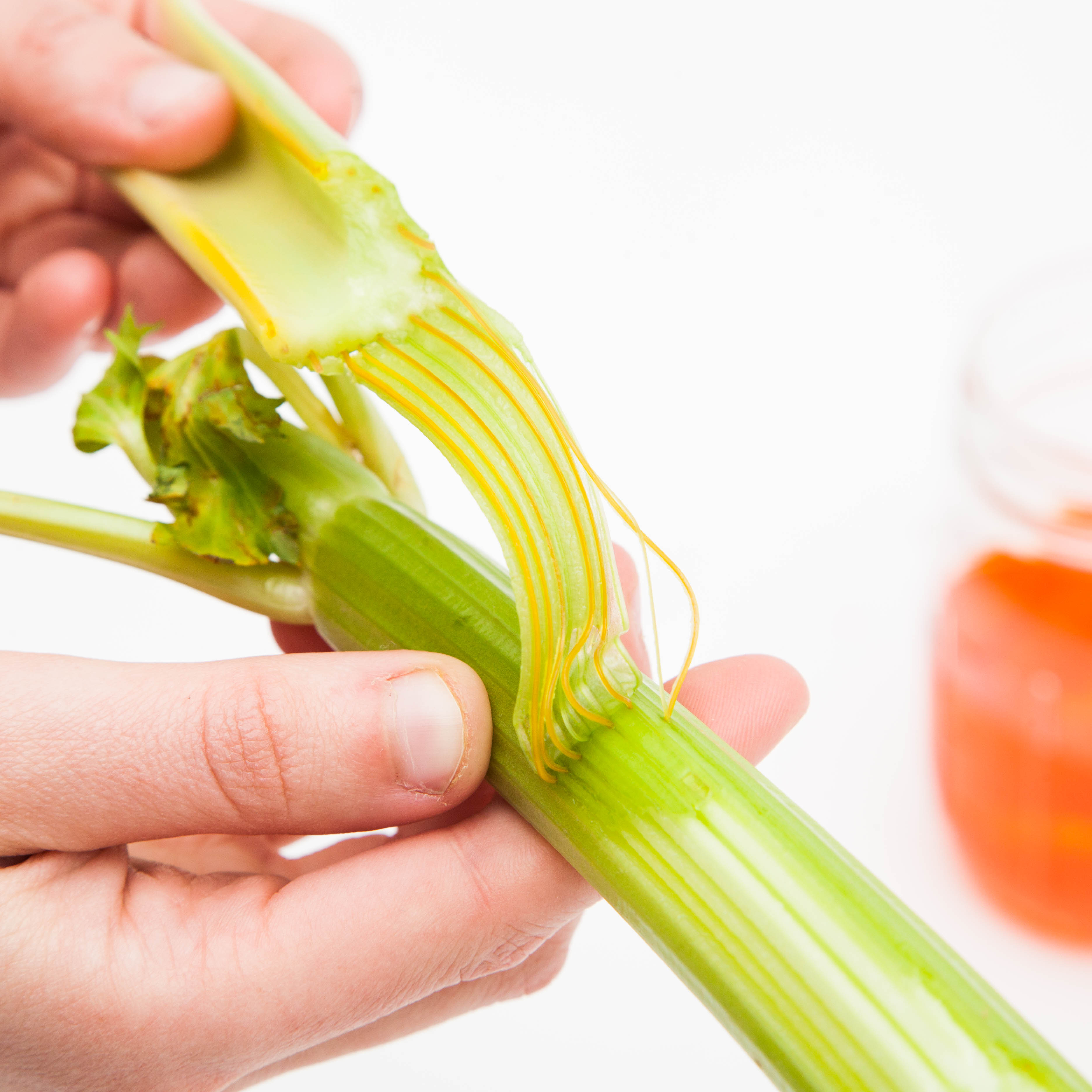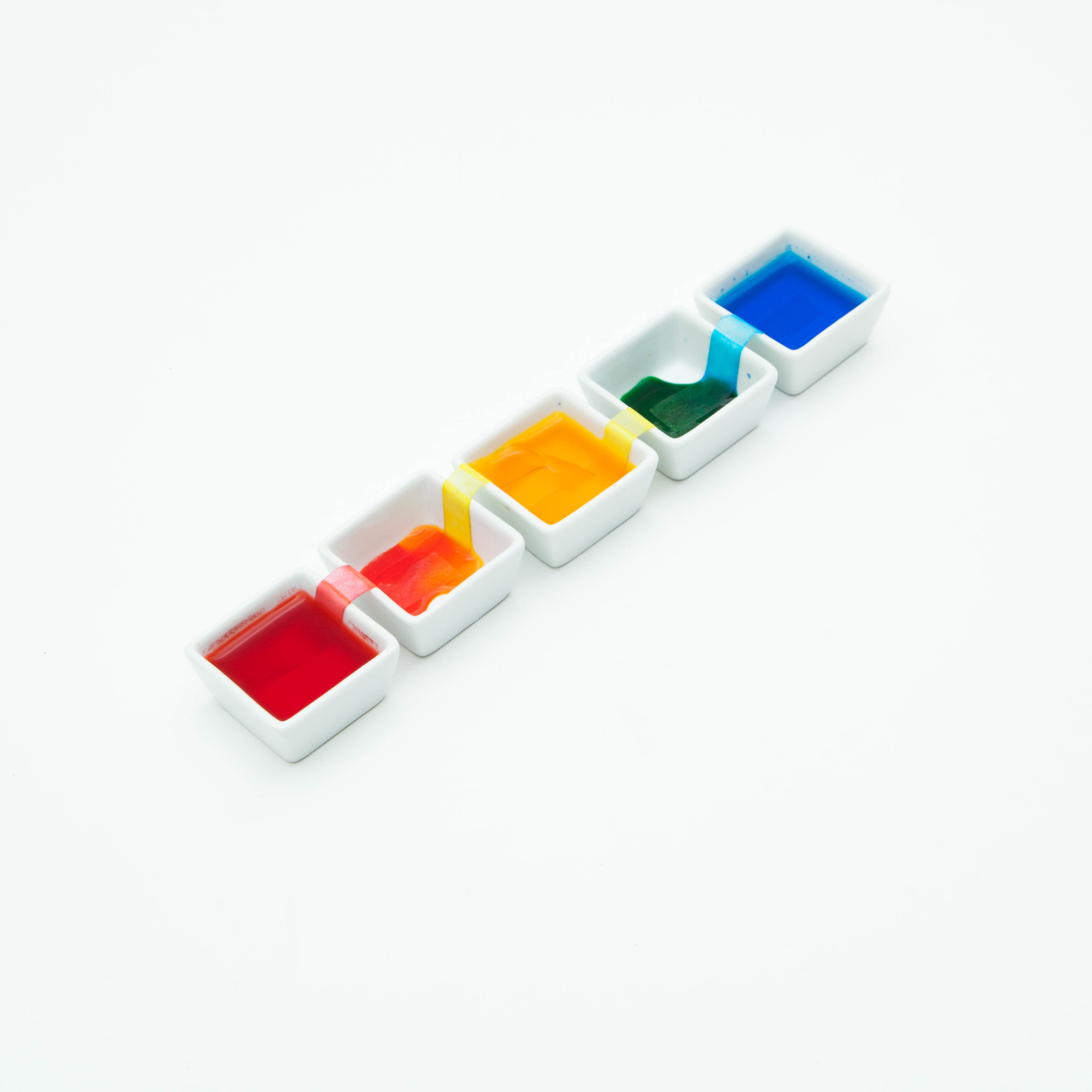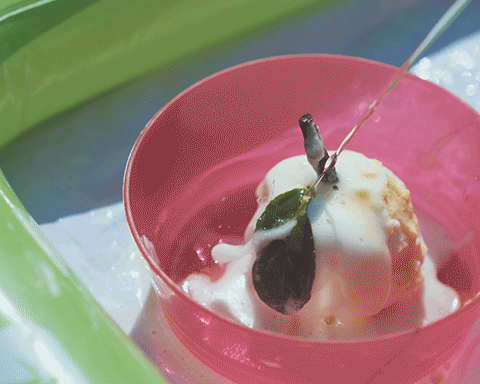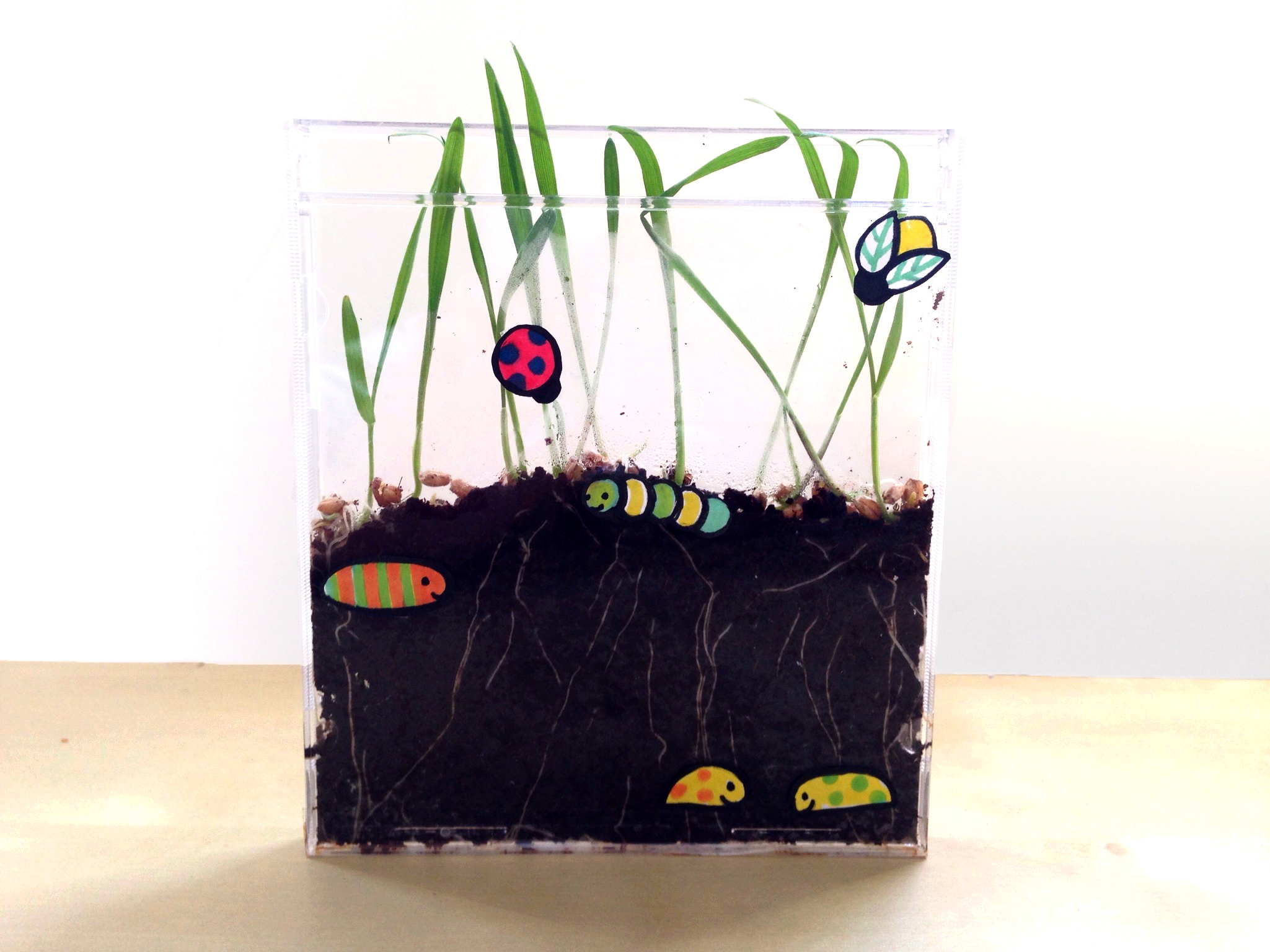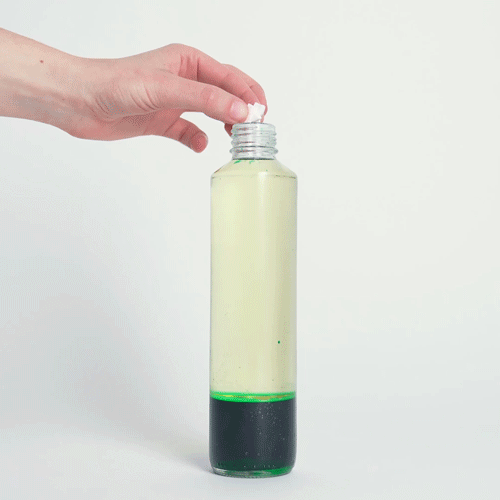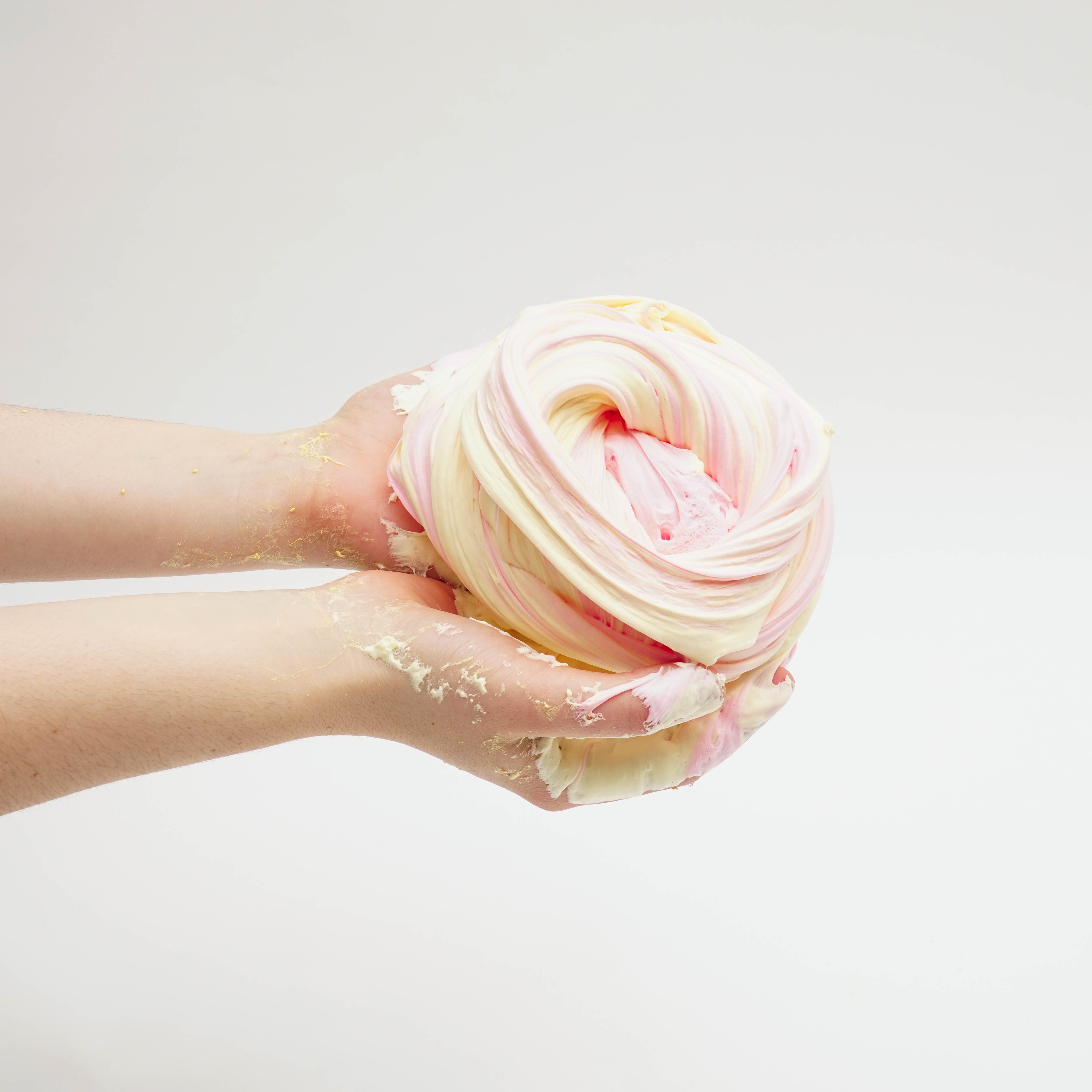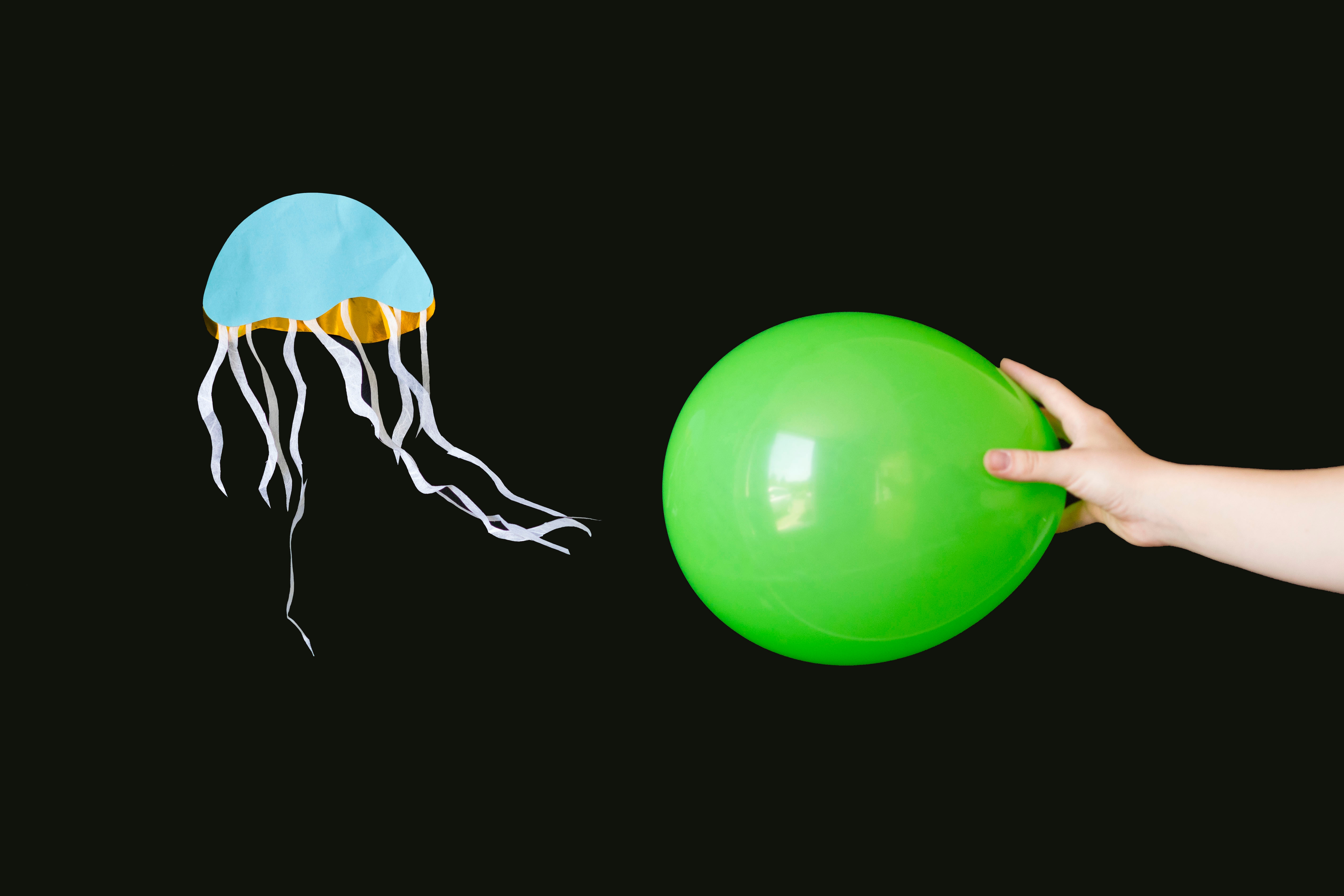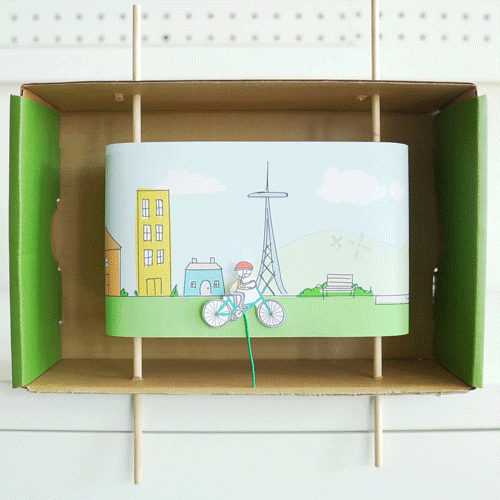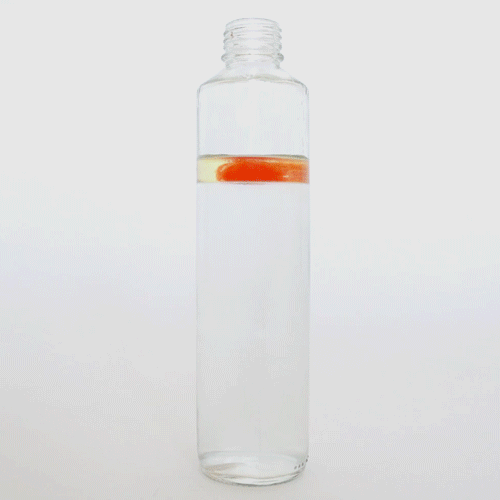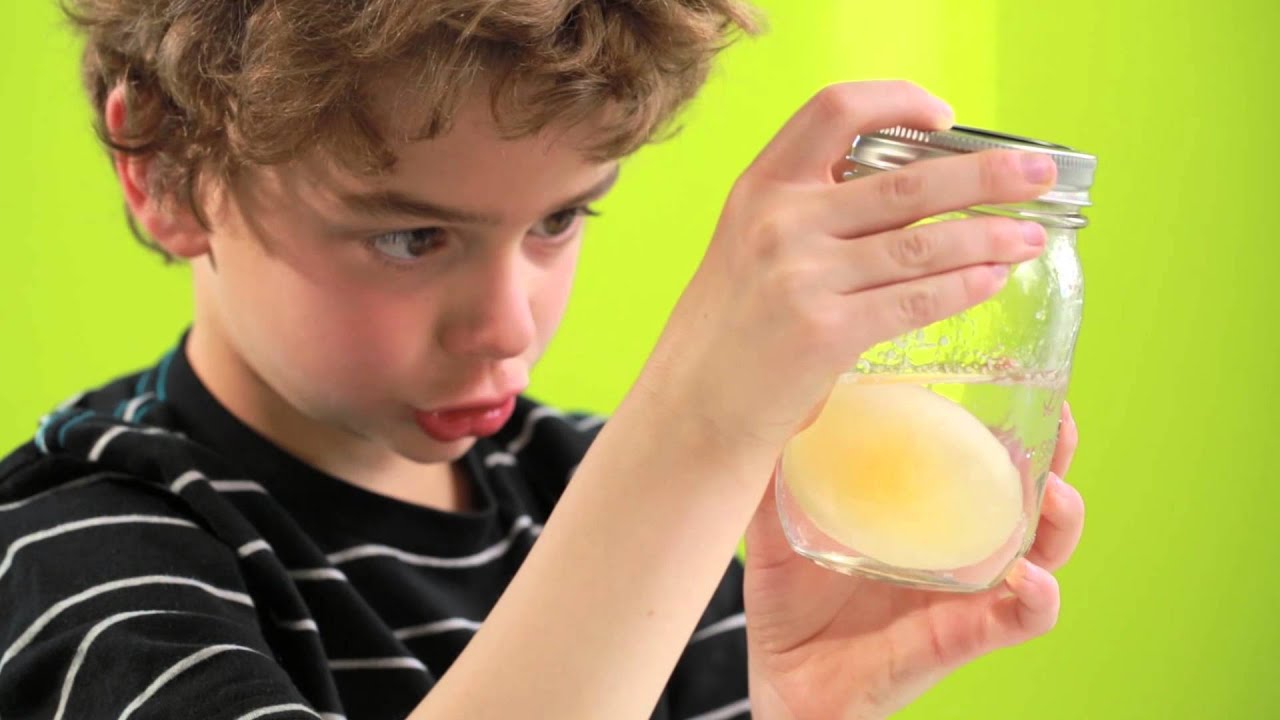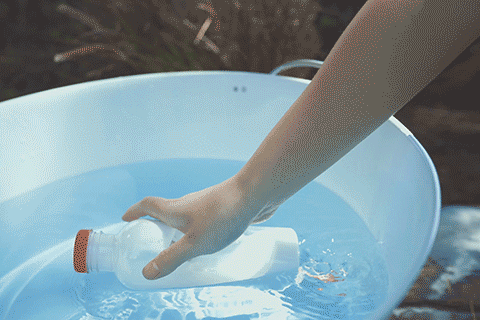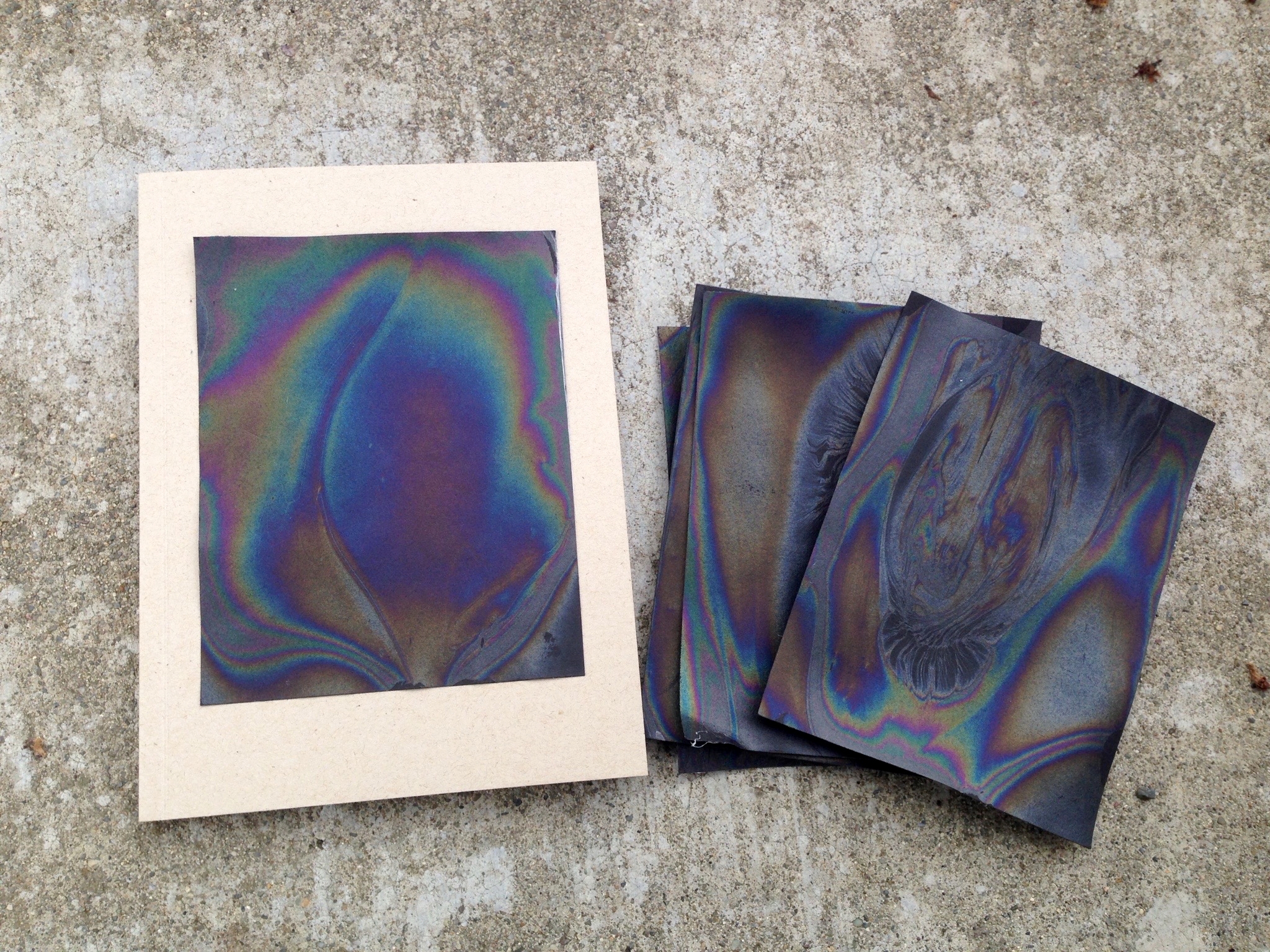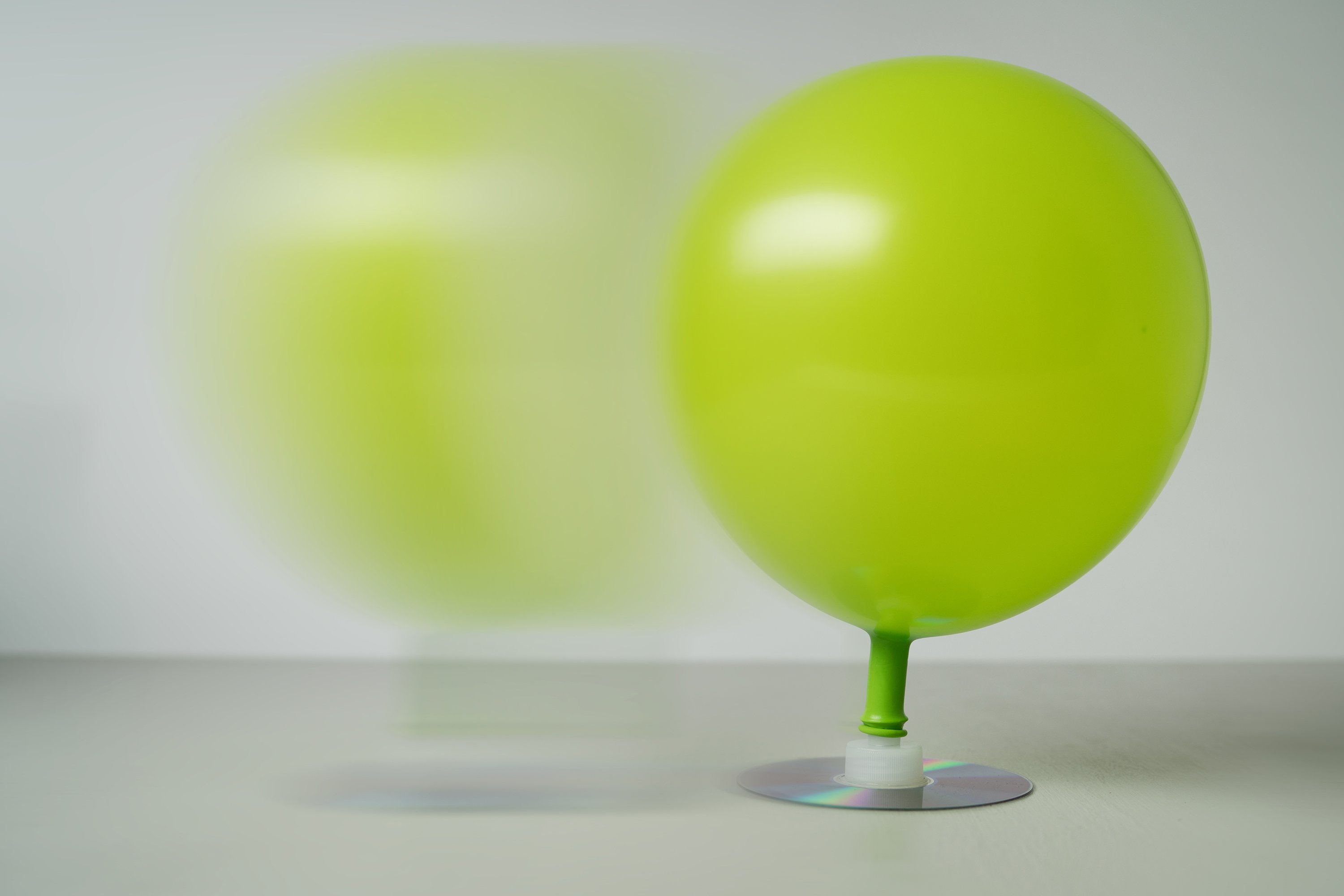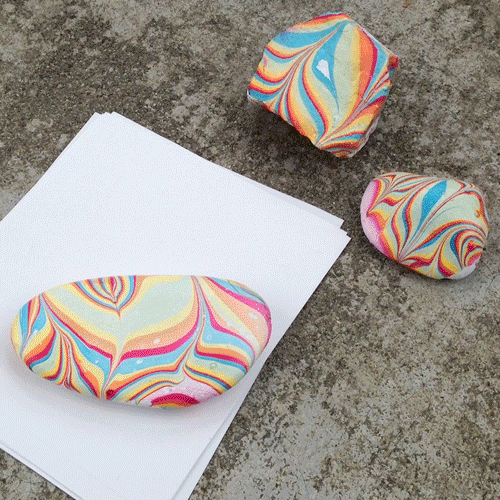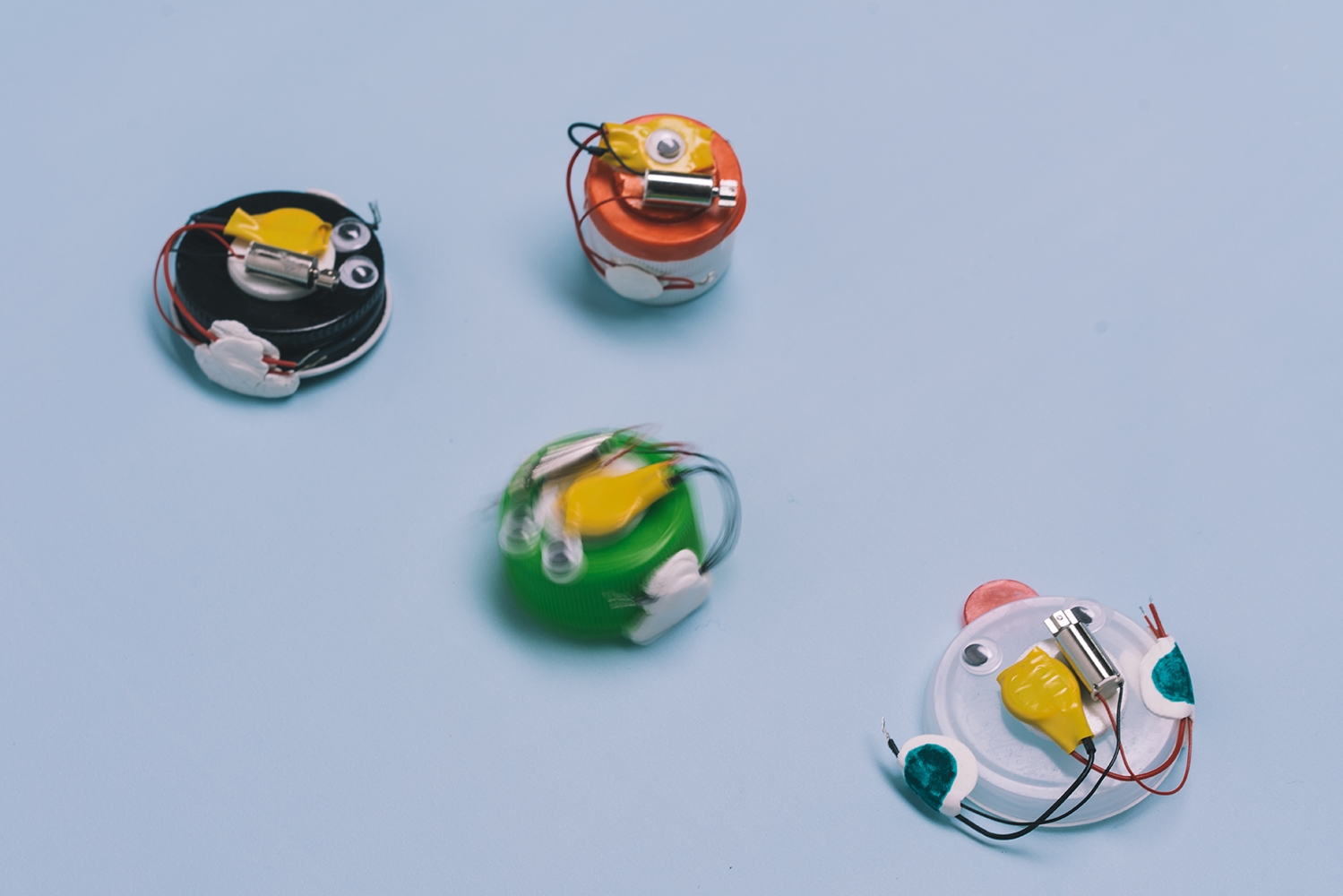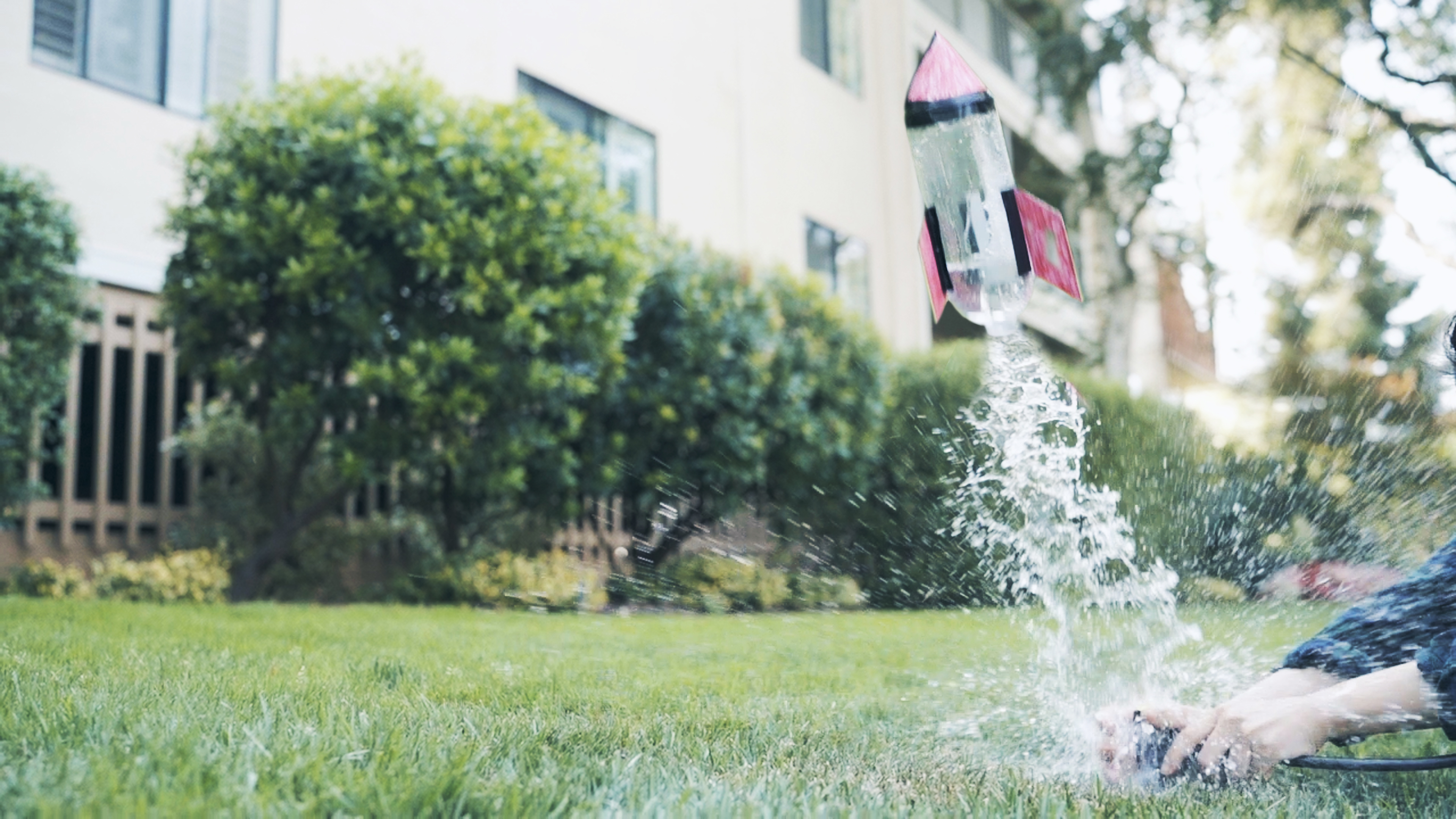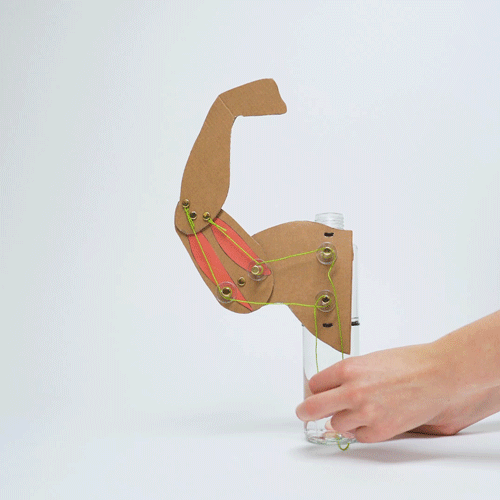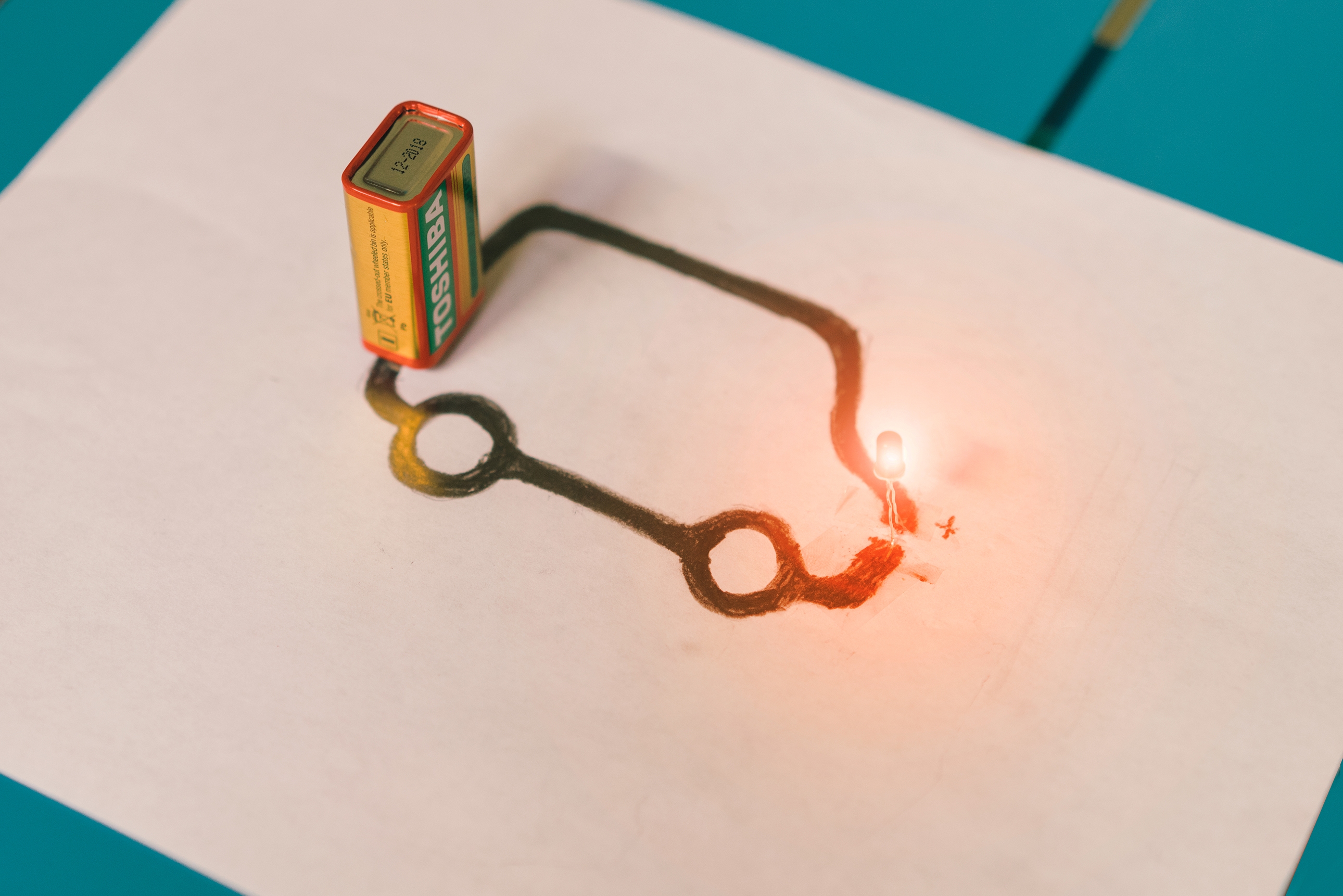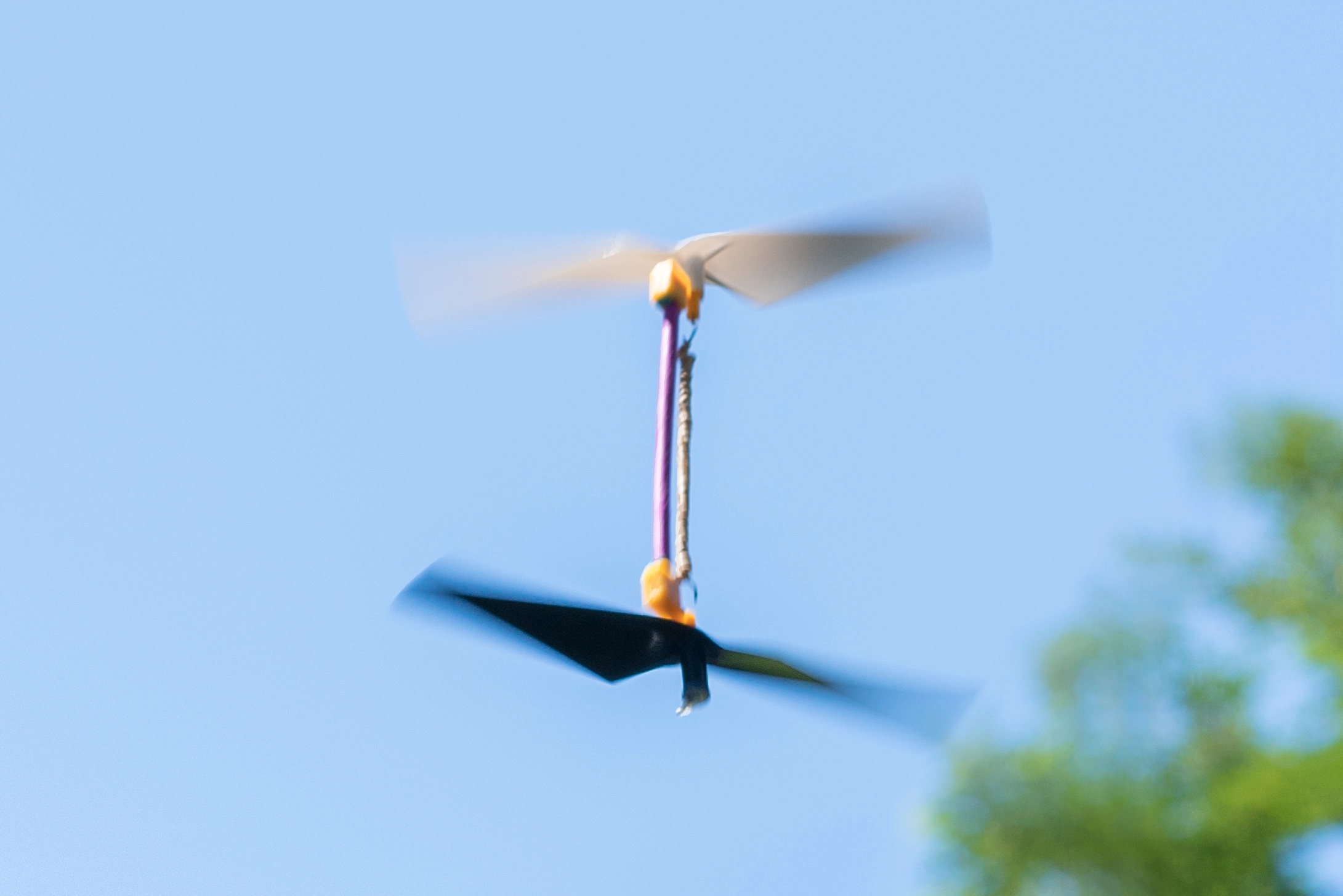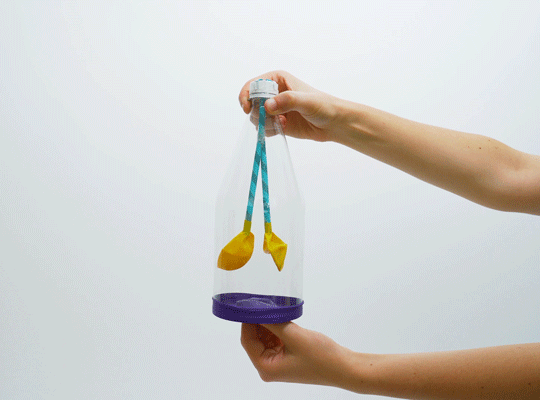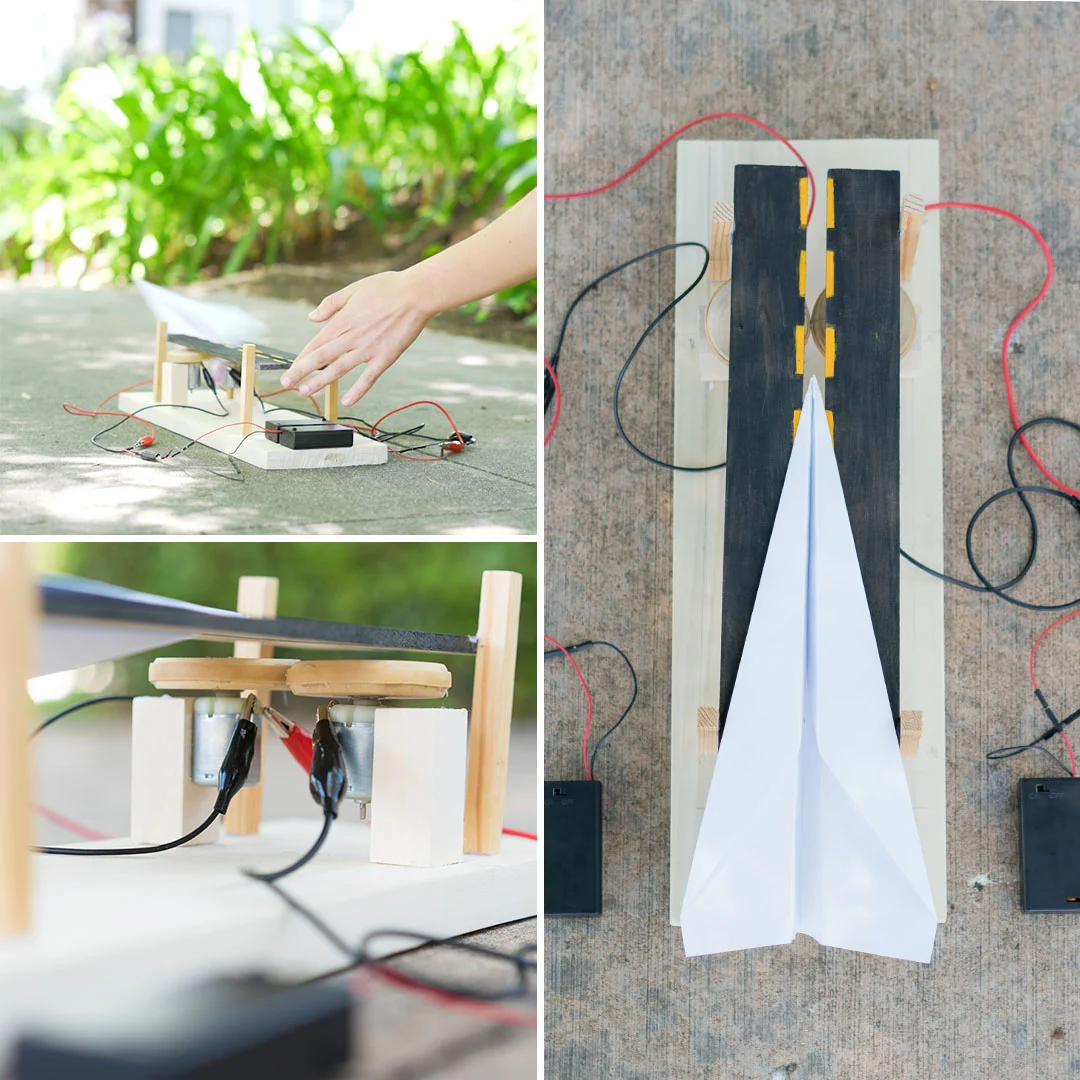Ages 3-4
- Milk Swirl Experiment
(Ages 3-11)
See how a drop of soap can create an explosion of color with this easy experiment!
Want to learn more about chemistry without the hassle of gathering materials? Explore 11 fun chemistry experiments with a Chemistry Play Lab from the KiwiCo Store!
- Salt Dough Dinosaur Fossils
(Ages 3-8)
Create your own fossils out of salt dough!
Looking to spark fun and learning for a young dinosaur-loving adventurer? Use tools to excavate bones just like a real paleontologist with a Paleontologist Starter Kit from the KiwiCo Store!
All you need are simple household items to make this giant bubble wand and a bubble solution for giant bubbles. Once they’ve got the hang of it, challenge your kids to take turns trying to see who could make the biggest bubbles!
- Celery Experiment
(Ages 3-8)
Has your child ever wondered how plants get water from their roots all the way to their leaves? This simple celery experiment shows how colored water travels up a celery stalk!
Looking for more kitchen learning projects to do with your young scientist? Roll and stamp your way to early math exploration with a Fun Dough Pasta Maker from the KiwiCo Store!
- Fizzing Colors
(Ages 3-12)
Turn your kitchen into a chemistry lab with this simple science experiment! You only need three ingredients: baking soda, food coloring, and vinegar.
Want to learn more about chemistry without the hassle of gathering materials? Explore 11 fun chemistry experiments with a Chemistry Play Lab from the KiwiCo Store!
- Rainbow Walking Water
(Ages 3-8)
Discover the magic of color mixing and capillary action with this easy and exciting science project!
Ages 5-8
- Erupting Apples
(Ages 3-8)
When you have three little curious boys running around your house and a free afternoon, why not get a little messy and do some kitchen science? We did ours in the backyard and let the whole thing become a super sensory experience. When they inevitably try and find the remains of their apple in the mound of foam, be sure to ask them what it feels like.
Want to explore more kitchen science experiments? Explore the tastier side of learning with Science of Cooking: Bread & Butter from the KiwiCo Store!
- Make Your Own Garden
(Ages 5-16)
Now that spring is finally here, we've been planting all sorts of seeds on our window sills. From tomatoes to cucumbers, our family has been watching our plants sprout and grow. When my kids wanted to get in on the action, we set up this easy CD garden using wheatgrass seeds. To their delight, the wheatgrass seeds have sprouted in a matter of days. They now take turns tracking and watering their growing garden every day.
- Fizzy Lava Lamp
(Ages 5-16)
Have you ever seen a lava lamp? All of the colorful wax that rises and falls, bobbing around--it's mesmerizing! You've probably wondered how to make one. This is an easy science experiment that you can do at home to create your very own homemade lava lamp. And it only takes a few common household ingredients!
Looking for ways to keep your young scientist engaged and learning? Learn about chemistry and practice art skills with Planet Bath Bombs from the KiwiCo Store!
- Fluffy Slime
(Ages 5-16)
Take your slime game to the next level! Shaving cream makes this special concoction soft, squishy, and irresistible.
- Electric Jellyfish
(Ages 5-8)
Learn about creating static electricity with this simple project. Explore more by using this technique to create a living birthday cake with candles, campfire, or wetland scene!
- Conveyor Belt Cinema
(Ages 9-16)
Use a small-scale conveyor belt to create a cinematic experience! Download the printables here: background image & still image.
Want to explore more fun crafts without the hassle of gathering materials? Get hands-on and make visually stunning candles with a Geometric Candles project from the KiwiCo Store!
- Underwater Fireworks
(Ages 5-11)
With your kitchen as your lab and baking supplies as your ingredients, create your own underwater firework spectacular! These underwater fireworks go off because of density. Density means how much something weighs for a given volume of it. Denser things like iron and stone sink. Less dense things like wood and rubber float.
In this experiment, you use four different liquids with four different densities: oil, water, food coloring, and saltwater. The oil sits on top of the water because it’s less dense than water. The water sits on top of the saltwater for the same reason. Food coloring is denser than oil and a little bit denser than water, but it isn’t as dense as saltwater. When the drops of food coloring hit the dense saltwater, they disperse like exploding fireworks!
Eager to learn more about the world around us? Explore the science of volcanic eruptions with a Geologist Starter Kit from the KiwiCo Store!
- Egg in Vinegar Experiment
(Ages 5-11)
Want to see a chemical reaction in action? With this egg in vinegar experiment, we observed and followed a regular egg through a transformation to become a bouncy egg. You can too with just a few repurposed ingredients you may have around the house for Easter!
This experiment allows you to see how two common household materials react — eggshell and vinegar. When these materials come in contact, a (safe) chemical reaction takes place and creates new compounds. This easy experiment is great for children to do on their own, and fun to observe how the egg changes over time.
Want to explore more kitchen science experiments? Explore the tastier side of learning with Science of Cooking: Ice Cream from the KiwiCo Store!
Ages 9-12
- Desk Catapult
(Ages 9-16)
Turn office supplies into a mini catapult, then try a pom-pom launching contest with a friend!
- Baking Soda-Powered Boat
(Ages 7-16)
Fizz, fizz, zoom! This baking soda experiment boat is easy to build and fun to race.
Discover more about the science of pressure with a Bottle Rocket kit from the KiwiCo Store! Assemble a launcher, rocket, funnel, and launch mixture to experience some extremely fizzy fun.
- Rainbow Paper
(Ages 9-16)
Did you know that you can create a rainbow with clear nail polish? Try this quick experiment using clear nail polish and black paper to make a swirling mix of colors.
Since it involves nail polish, younger kids shouldn't attempt this on their own. Although with supervision, it's simple enough for elementary age kids to enjoy as well. I tried this out with my 5-year-old, and he loved watching the rainbow colors appears. Just make sure to supervise and protect your table or work surface from spills.
- Parachute Toy
(Ages 9-16)
Have you ever ridden a bicycle down a hill and felt the wind on your face? Air is all around you. To move through it, you have to push it out of the way. That means it's pushing back on you, too. That push is called air resistance. Imagine a parachutist jumping out of an airplane and falling to the ground. The opened parachute would use air resistance to slow down its descent. In this experiment, we create a parachute toy using a Ziploc® brand sandwich bag to learn about air resistance and see it in action.
- Balloon Hovercraft
(Ages 5-16)
You don't need high-tech gadgets to make your own hovercraft! This balloon-powered toy is easy to make with household materials and is a ton of fun to send zooming around! We had so much fun passing the hovercraft across a long table. A light push sends it gliding along in a straight path. And, the balloon had enough air in it for a few pushes, which means you can involve a few friends. Keep blowing the balloon up for more and more fun!
Trade your hovercraft for a space shuttle with KiwiCo's Astronaut Starter Kit! This project comes with everything you need to construct a shuttle, paint a set of model planets, and more!
- Marbled Paperweight
(Ages 9-16)
These pretty rainbow rocks are perfect for brightening up your desk! With just some nail polish and water, you can transform an ordinary rock into your own marbled paperweight.
Want to explore more fun crafts without the hassle of gathering materials? Get hands-on and make visually stunning candles with a Geometric Candles project from the KiwiCo Store!
- Bottle Cap Bots
(Ages 9-16)
Transform old bottle caps into little robots that dance and scoot in all kinds of surprising ways!
- Wave Machine
(Ages 5-16)
We’re surrounded by waves! Sound and light travel as waves to our ears and eyes. Ocean waves crash onto the beach. Radio waves broadcast music to our cars. We even use waves to cook our food - in microwaves! Try making this wave machine to see how all different kinds of waves move!
Ages 12+
- Pressure Bottle Rocket
(Ages 9-16)
Water squirters work by pressurizing reservoirs of water with air. As you pump the squirter, it gradually adds air to the reservoir, increasing the pressure. When you pull the trigger, the pressure is allowed to release and a stream of water shoots out!
In this DIY project, we'll learn how to use the exact sample principles found in water squirters to launch a water rocket sky-high! Follow along with these simple steps and you'll be blasting off in no time.
Want to make a bottle rocket without the hassle of gathering materials? Blast off with a Bottle Rocket crate from the KiwiCo Store! It includes a step-by-step video tutorial link, illustrated blueprint instructions, all the materials, and a special-edition Tinker Zine magazine for more project fun!
- Melted Crayon Art
(Ages 5-16)
Melting. It's a natural process that we can see every day: the ice in a glass of water, the butter on bread right after it’s toasted, the candles on a birthday cake. Let’s try to melt crayons into a work of art!
- Muscle Machine
(Ages 9-16)
This mechanical muscle machine models how your bicep and tricep muscles make your arm move. By linking levers together, you can create a complex motion and get pumped!
Download the printable here.
- Graphite Circuit
(Ages 9-16)
Can you complete an LED circuit using a graphite pencil? Learn about the conductive properties of graphite and draw your own design to see it light up!
- Rubber Band Helicopter
(Ages 9-16)
Learn about helicopters by making a rubber band powered flying toy!
Discover more about the physics of flight with a Bottle Rocket kit from the KiwiCo Store! Assemble a launcher, rocket, funnel, and launch mixture to experience some extremely fizzy fun.
- Lung Model
(Ages 7-16)
Breathe in. Breathe out. Do you feel your chest expand and shrink when you breathe? That change in size is how you get air into your lungs! It all has to do with the physics of air pressure, which you’ll investigate in this project.
Want to explore anatomy without the hassle of gathering materials? Dive into learning with a Vet Starter Kit from the KiwiCo Store!
- Paper Airplane Launcher
(Ages 9-16)
Take your paper airplanes to new heights by making a motorized launcher for them.
Build more awesome electronic vehicles, all from one convenient kit with a Make-It-Move Electronics Set from the KiwiCo Store!
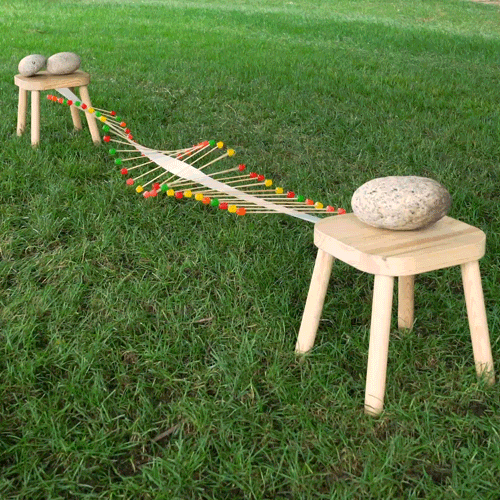
30 Screen-Free STEAM DIYs for Kids
In today’s day and age, it can be tough to tear our little humans away from the screens and devices we’ve all become so attached to. But there’s nothing quite as enriching and satisfying for kids as getting their hands dirty and making something themselves. And of course, it never hurts if they learn something new along the way! Keep those tiny hands and brains busy year round with this list of screen-free DIYs for kids of all ages.

